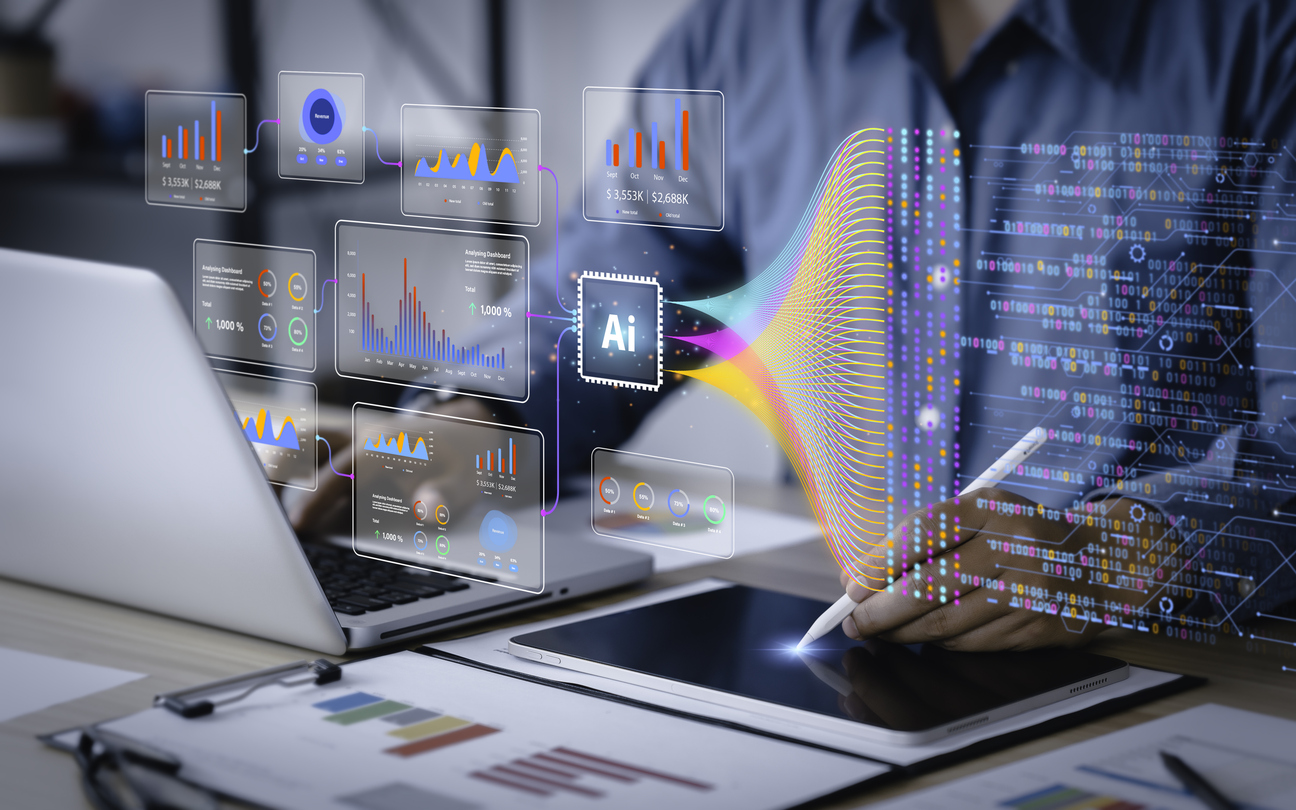ERP Modernization: When to Upgrade and How to Manage Change for Strategic Advantage
Enterprise Resource Planning (ERP) modernization has become a strategic imperative for businesses seeking not just agility and efficiency, but also as a foundational step towards innovation and new business models. As legacy on-premises systems age and fail to keep pace with evolving market demands and technological advancements, organizations face critical decisions: when to upgrade, and perhaps even more importantly, how to navigate the complex change management process that touches every corner of the enterprise.
What Is ERP Modernization?
ERP modernization refers to the comprehensive process of updating or entirely replacing an organization’s existing ERP system—which can often be decades old and deeply ingrained—with a more flexible, cloud-native, or hybrid solution. Modern platforms like SAP S/4HANA, Oracle Fusion Cloud, and NetSuite offer significant enhancements: real-time analytics, embedded artificial intelligence (AI), machine learning capabilities, and seamless integration with emerging technologies such as the Internet of Things (IoT). These advanced capabilities help businesses respond faster to dynamic customer needs, optimize complex global supply chains, reduce operational costs, and most crucially, unlock opportunities for data-driven innovation and new revenue streams.
Why Should You Modernize Your ERP Now?
Many companies delay ERP upgrades until they are effectively forced by vendor end-of-support deadlines or crippling performance issues. However, the true costs of inaction—ranging from critical security vulnerabilities and compliance risks to missed market opportunities and a growing competitive disadvantage—often far outweigh the investment required for modernization.
A global manufacturing firm illustrates this stark reality. Stuck on an on-premises ERP that lacked the flexibility and scalability to handle seasonal peaks, they consistently faced stockouts, relied on inefficient manual workarounds, and struggled with siloed data that prevented a unified view of operations. After migrating to SAP S/4HANA Cloud, they not only reduced order-to-cash cycle times by 30 percent but also gained predictive insights into inventory needs, significantly improving customer satisfaction and profitability.
Key strategic drivers for ERP modernization include:
- Vendor Sunset: Major vendors are systematically phasing out support for legacy systems (e.g., SAP ECC reaching end-of-support in 2027), leaving unsupported systems vulnerable and non-compliant.
- Regulatory Compliance: Modern ERP platforms offer robust, built-in compliance controls for evolving mandates like GDPR, SOX, and industry-specific regulations, simplifying audits and reducing risk.
- Mobility and Remote Work: Cloud ERP delivers secure, 24/7 access from any device, anywhere—a critical capability for today's distributed and agile workforces.
- Data-Driven Decision-Making: Embedded analytics, AI, and machine learning empower leaders with real-time dashboards, predictive forecasting, and deeper insights, transforming data into a strategic asset.
- Competitive Pressure: Competitors leveraging modern ERP systems gain agility, market responsiveness, and innovation capabilities, making modernization essential to maintain relevance.
Related: How Businesses Use Technology to Operate Efficiently: The Digital Transformation Imperative
How Do You Know It’s the Right Time to Upgrade?
Determining the optimal timing for an ERP upgrade requires a thorough assessment of both technical capabilities and overarching business criteria. An ERP health check—covering current system performance, the extent of customizations, user satisfaction levels, and escalating support costs—is the essential first step. If recurring system outages, over-reliance on custom patches, or persistent integration challenges dominate your IT backlog, you’ve likely reached a technical tipping point.
Beyond technical indicators, business leaders must critically evaluate their strategic goals. Are you launching new product lines, expanding into new geographic markets, pursuing mergers or acquisitions, or planning to automate key workflows across finance, procurement, or manufacturing? If your current ERP cannot adequately enable or scale to support these critical business objectives, modernization should move to the absolute top of your agenda.
Choosing Your Path: Cloud, Hybrid, or On-Premises
No two ERP modernization paths are identical, and the optimal choice depends heavily on an organization’s unique needs and constraints. The primary options include:
- Full Cloud Migration: Shifting entirely to cloud-native platforms such as Oracle Fusion Cloud or NetSuite. This option maximizes scalability, agility, and minimizes on-site infrastructure management, often leading to predictable operational costs.
- Challenge: May require significant process redesign and cultural shifts, and necessitates careful consideration of data governance and vendor lock-in.
- Hybrid Deployment: Retaining certain critical on-premises modules—such as highly specialized manufacturing execution systems or sensitive data repositories—while strategically moving finance, HR, and analytics to the cloud. This staged approach can reduce initial risk and preserve investments in highly customized legacy modules.
- Challenge: Increases integration complexity and requires robust data synchronization strategies between cloud and on-premises environments.
- Upgrade On-Premises: For companies with stringent data sovereignty requirements, highly unique customized workflows, or significant existing infrastructure investments, upgrading to the latest on-premises release (e.g., SAP ECC to SAP S/4HANA on-premise) can provide new capabilities while maintaining local control.
- Challenge: Involves higher initial capital expenditure, ongoing maintenance burdens, and potentially slower access to the latest innovations compared to cloud-native solutions.
Evaluate each deployment model against your organization’s regulatory landscape, internal IT staffing capabilities, total cost of ownership (TCO) over a 5-10 year period, and long-term digital roadmap. TCO considerations must go beyond initial licensing to include implementation costs, ongoing maintenance, support, customization efforts, and potential infrastructure upgrades.
Selecting Your Partners: Vendors and System Integrators
Beyond choosing a deployment model, the success of an ERP modernization project hinges on selecting the right technology vendor and, crucially, the right System Integrator (SI).
- Vendor Selection: Conduct thorough due diligence on shortlisted ERP vendors. Request detailed demos that map to your specific business processes, check customer references, and understand their product roadmap to ensure alignment with your future strategic direction.
- System Integrator (SI) Selection: Most complex ERP implementations require external expertise. Choose an SI with proven experience in your industry, a strong methodology for project management and change management, and a cultural fit with your organization. Their ability to manage data migration, customizations, and user training is paramount.
Data Migration: The Backbone of Modernization
Data migration is often cited as the most complex and risky phase of an ERP modernization project. It involves extracting data from legacy systems, cleansing it (removing duplicates, correcting errors, filling gaps), transforming it to fit the new ERP’s structure, and finally loading it into the new system.
- Best Practices: Establish a dedicated data migration team, develop a meticulous migration plan, prioritize data cleansing and validation, perform multiple test migrations, and ensure continuous data reconciliation post-go-live. Poor data quality can cripple even the most advanced ERP system.
Managing Organizational Change
ERP modernization truly succeeds or fails on the strength of your change management plan. As new systems touch every single department—from finance and supply chain to sales and human resources—effective adoption requires clear, consistent communication, tailored training, and deep stakeholder alignment.
- Executive Sponsorship: A visible, vocal, and committed sponsor from the C-suite is indispensable. They set the strategic tone, secure necessary funding, articulate the vision consistently, and reinforce accountability across all business units.
- Process Standardization Before Automation: Prioritize comprehensive process re-engineering workshops before implementing the new system. This crucial step helps eliminate redundant or inefficient steps. Automating a broken process only compounds waste.
- Robust Communication Strategy: Develop a detailed communication plan that goes beyond simply announcing changes. Explain why the modernization is happening, what benefits it will bring to individual roles, and how daily work will transform. Proactively address user fears and concerns, reinforcing leadership's commitment.
- Role-Based and Ongoing Training: Tailor training modules precisely to user roles and responsibilities. Power users in finance need deep dives into advanced analytics, while sales teams require practical, mobile order-entry training. Importantly, provide continuous support, refresher courses, and readily accessible resources (e.g., quick guides, online modules) well after go-live. Empower internal "super users" as champions.
- Pilot and Scale: Mitigate risk by launching a pilot program in one business unit or a specific geography. Gather extensive feedback, fine-tune configurations and processes, then roll out the system in carefully managed waves. This iterative approach builds internal expertise and user confidence.
- Continuous Feedback Loops: Establish formal governance forums—comprising IT leadership, key business leads, and vendor partners—to regularly review system performance, address user concerns, prioritize enhancements, and track progress against KPIs. This fosters a culture of continuous improvement.
Real-World Example: NetSuite Migration at a Retail Chain
A regional retail chain faced significant operational challenges due to seasonal demand spikes that consistently overwhelmed its outdated legacy ERP system. By strategically migrating to NetSuite, the company achieved unified inventory visibility across its 120 physical stores and its burgeoning e-commerce platform. The project began with a meticulously planned three-month pilot in ten diverse locations, where store managers received hands-on, role-based training on critical functionalities like order management and reporting dashboards. Following a successful pilot, the chain completed a full rollout across its remaining locations within six months. This led to a remarkable 20 percent reduction in stockouts and a tangible 15 percent increase in same-store sales, directly impacting profitability and customer satisfaction.
Measuring Success Post-Modernization
After the successful go-live, rigorously evaluating the return on investment (ROI) is critical to validate the modernization effort and identify areas for continuous improvement. Track a comprehensive set of metrics, including:
- Operational Efficiency: Process cycle times (e.g., order-to-cash, procure-to-pay), system uptime, and performance.
- Cost Savings: Reductions in IT support tickets, decommissioned hardware costs, and legacy software licenses.
- User Adoption and Productivity: User adoption rates, satisfaction scores, and qualitative assessments of time freed up for strategic, value-added work.
- Strategic Impact: Faster time-to-market for new products/services, improved demand forecast accuracy, enhanced customer experience metrics, and employee engagement.
- Financial Metrics: Improved project margins, enhanced cash flow, and overall revenue growth directly attributable to ERP capabilities.
By aligning these KPIs with your initial business case, you not only validate the ERP modernization effort but also gain insights for ongoing optimization and continuous value realization.
Conclusion
ERP modernization is not a single, isolated project but an ongoing, strategic journey towards operational excellence and future-proofing. Deciding when to upgrade involves a delicate balance of addressing technical debt, pursuing ambitious strategic objectives, and responding to intensifying market pressures. Successfully managing the immense organizational change requires strong executive leadership, a meticulous data migration strategy, user-centered training, comprehensive communication, and iterative rollout approaches. By thoughtfully embracing modern ERP platforms—whether fully in the cloud, on-premises, or a hybrid model—businesses can unlock the unprecedented agility, insight, and innovation necessary to not only compete but truly thrive in the dynamic digital age.
Related: Sarbanes-Oxley Act Explained: How It Transformed Corporate Accountability














